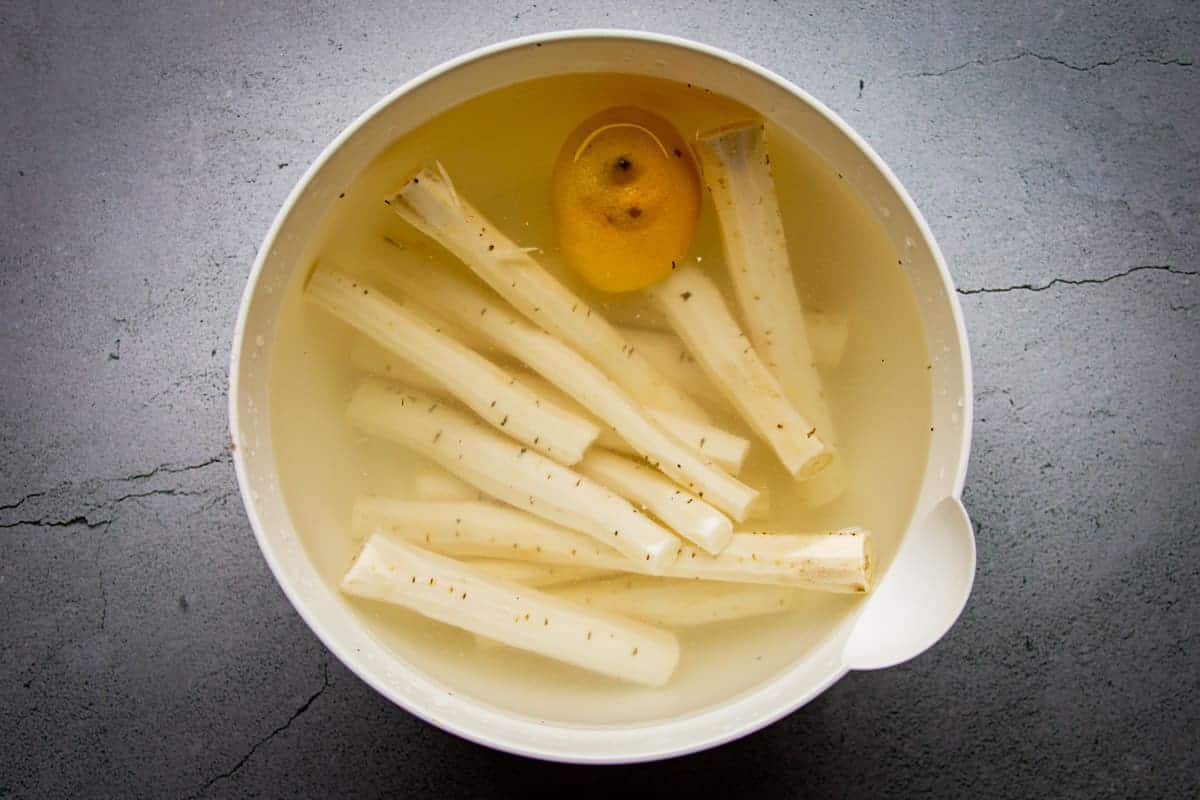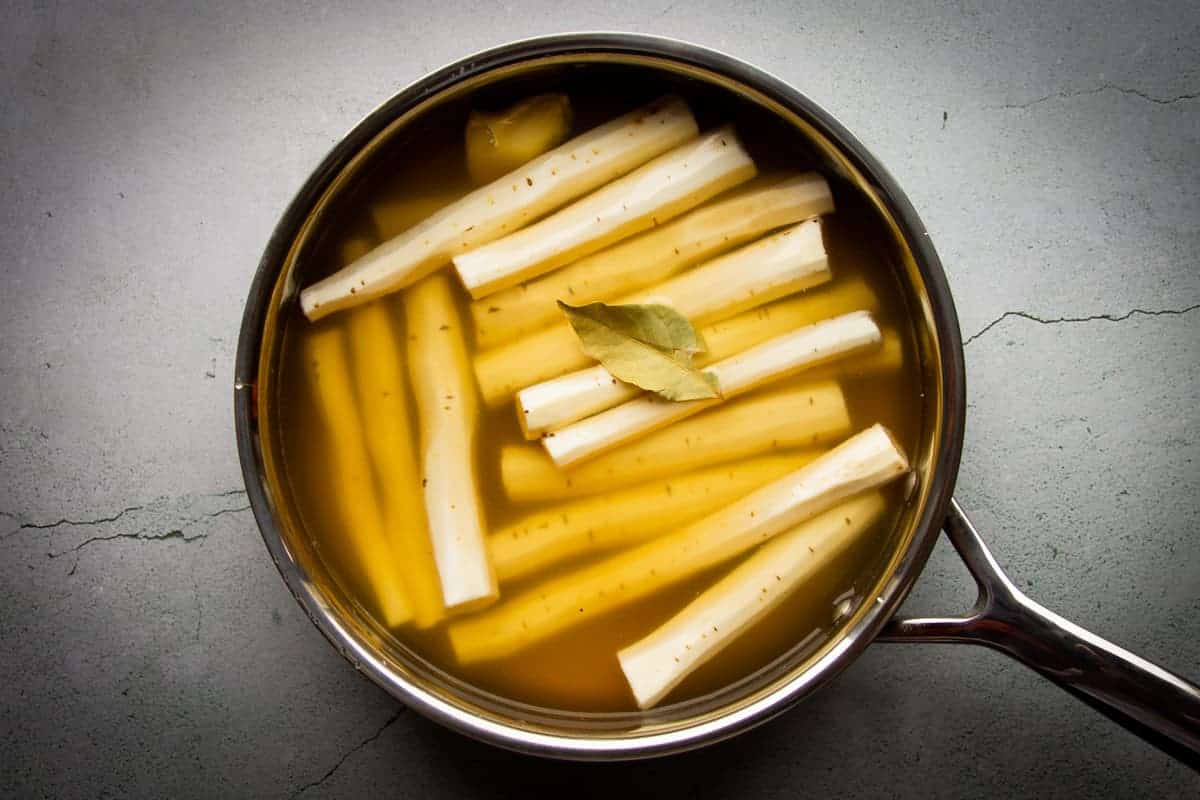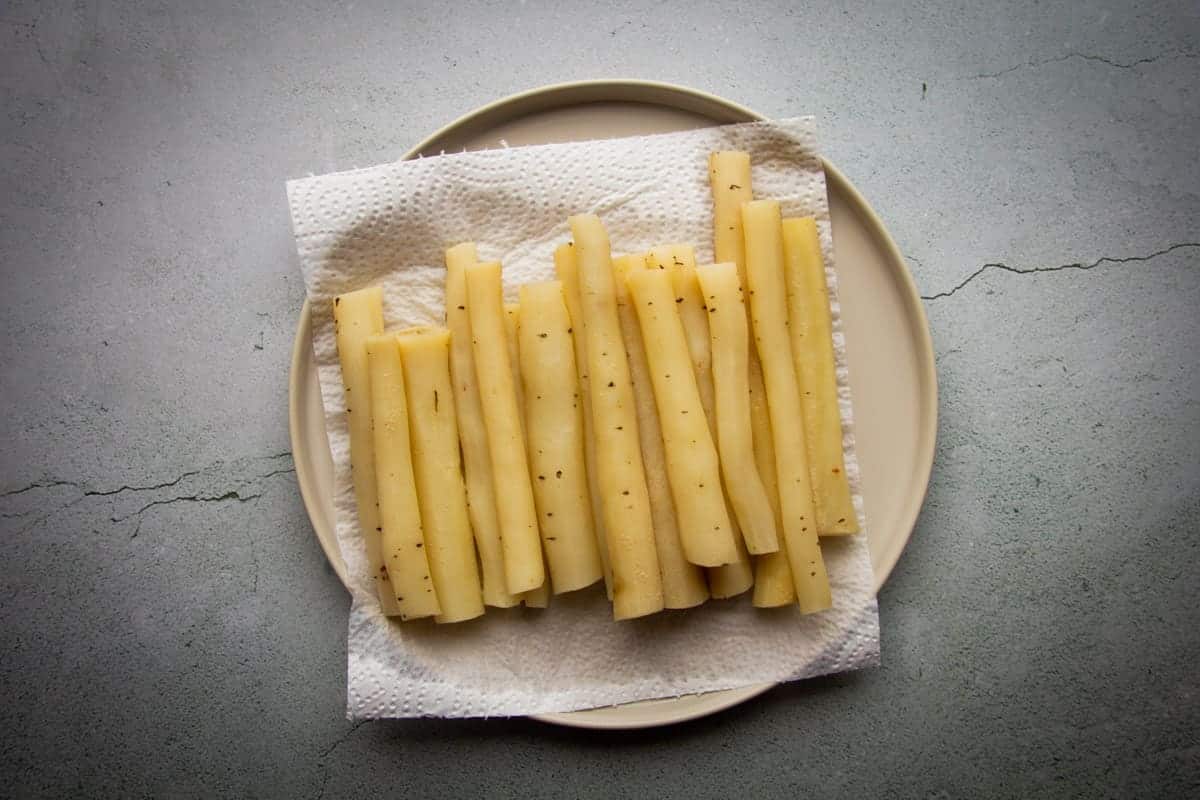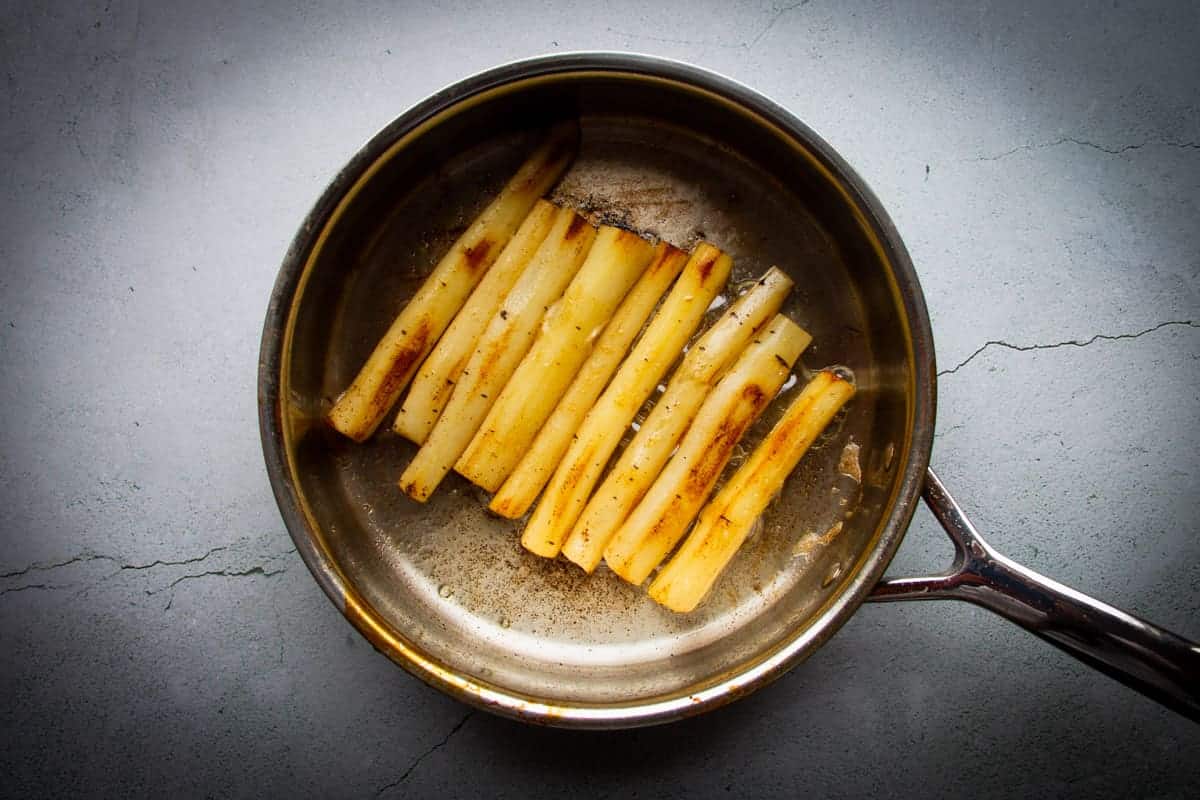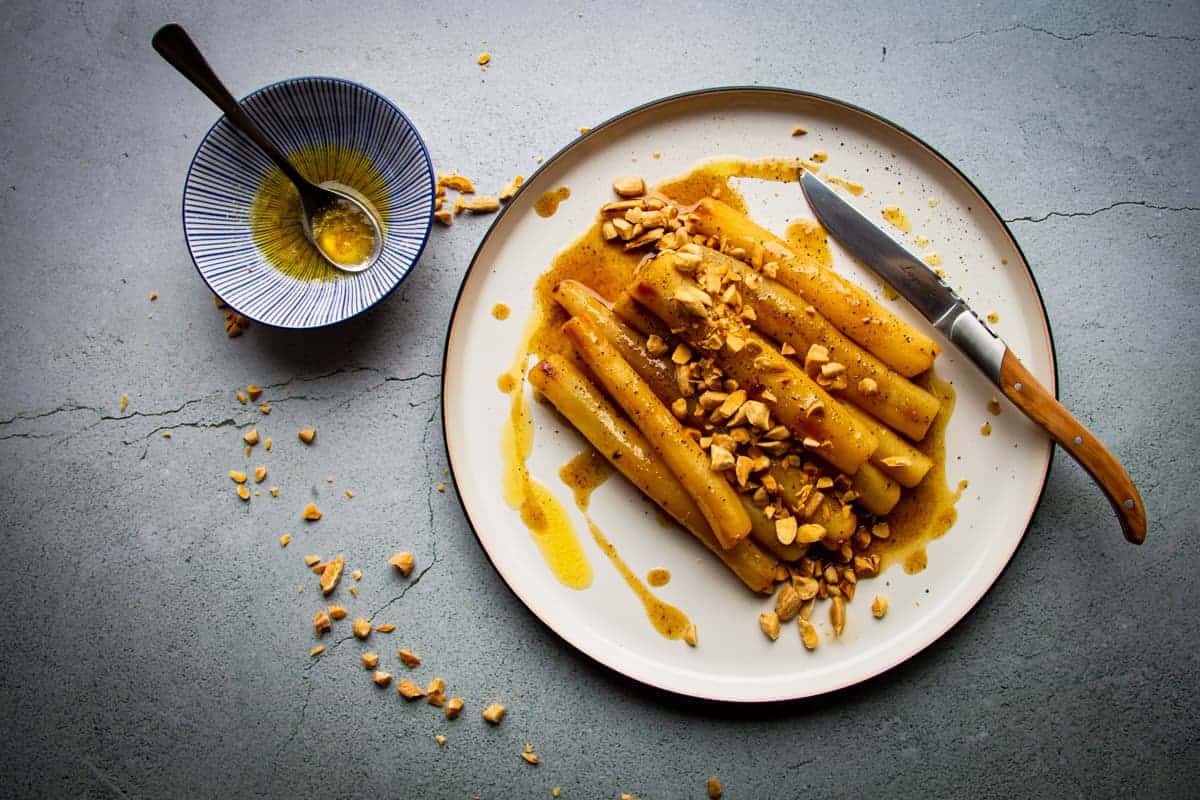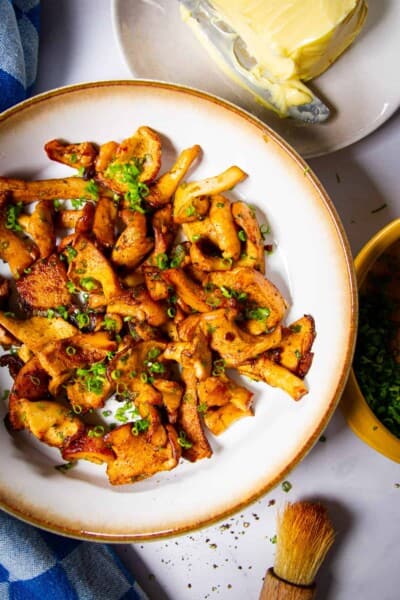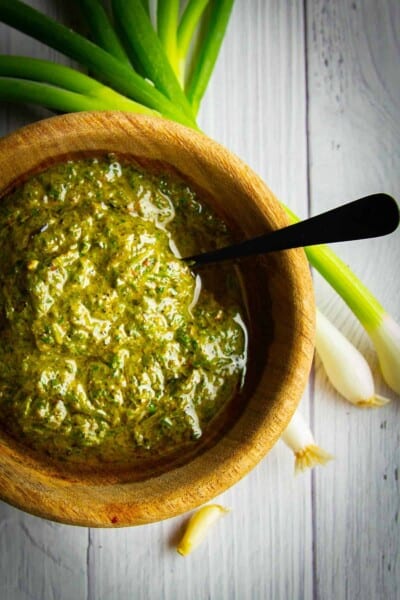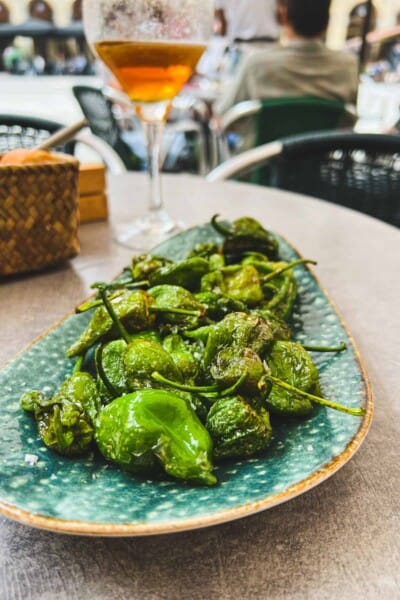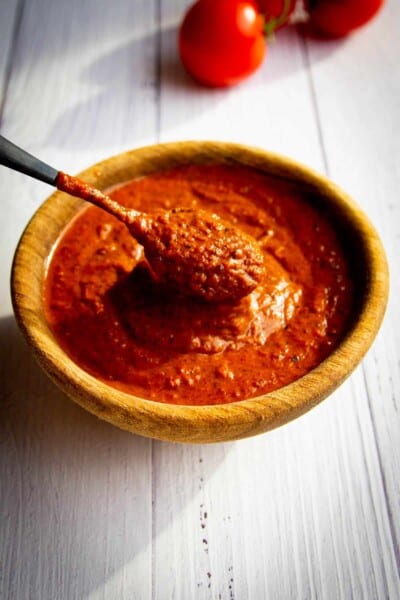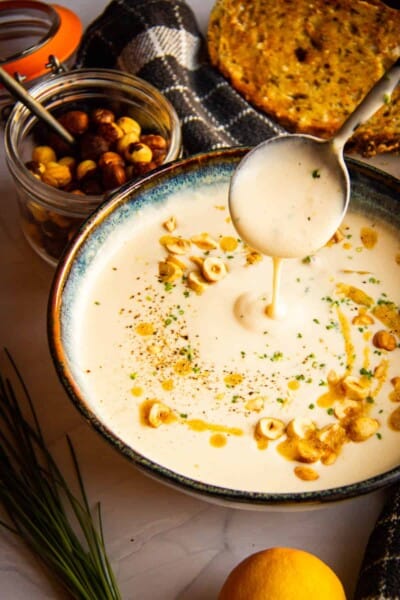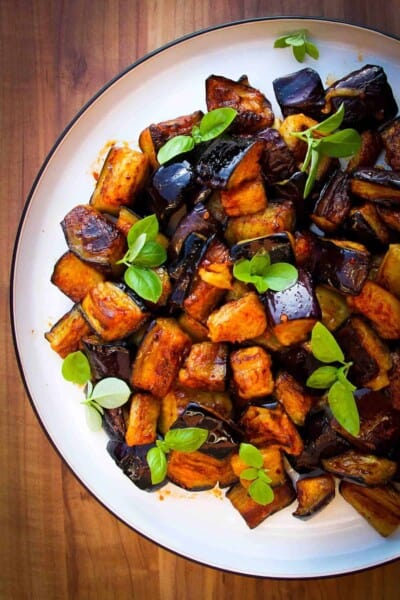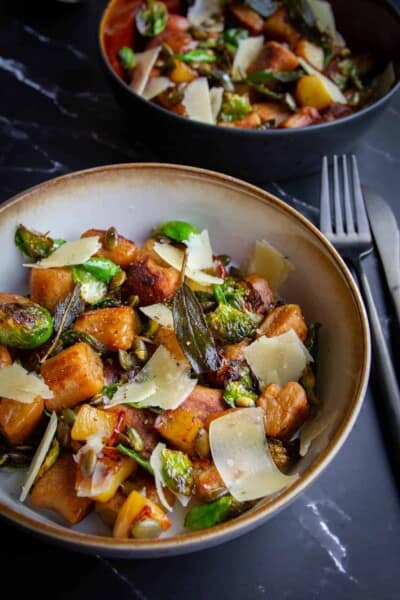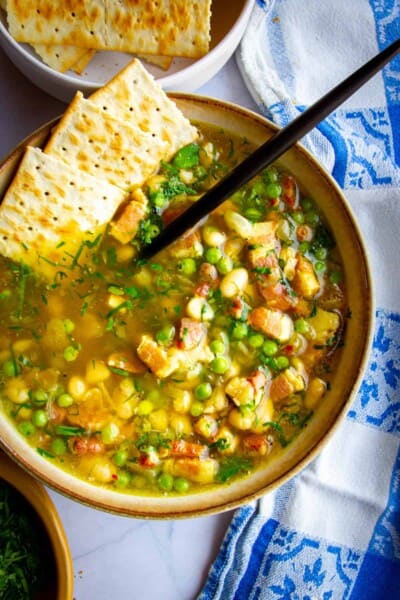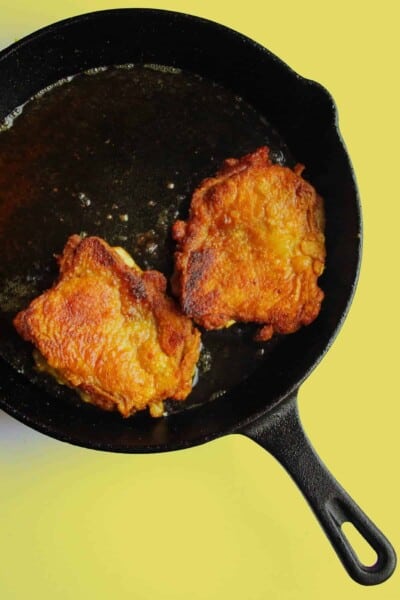Black salsify is really the Mercedes-Benz of root vegetables.
Its delicate earthy aroma and slightly sweet flavour make this one of my favourite vegetables to eat.
Depending on where you live, you might have seen this dirt-covered vegetable before in a farmer’s market mistaking it for a pile of dirty branches.
But underneath those soil-covered branches is a beautiful creamy-white flesh that’s well worth the work it takes to clean them.
If you’ve never tried it before, it may look a little intimidating but don’t worry because I’m here to help. Read on for everything you need to know to properly prepare this gorgeous vegetable.
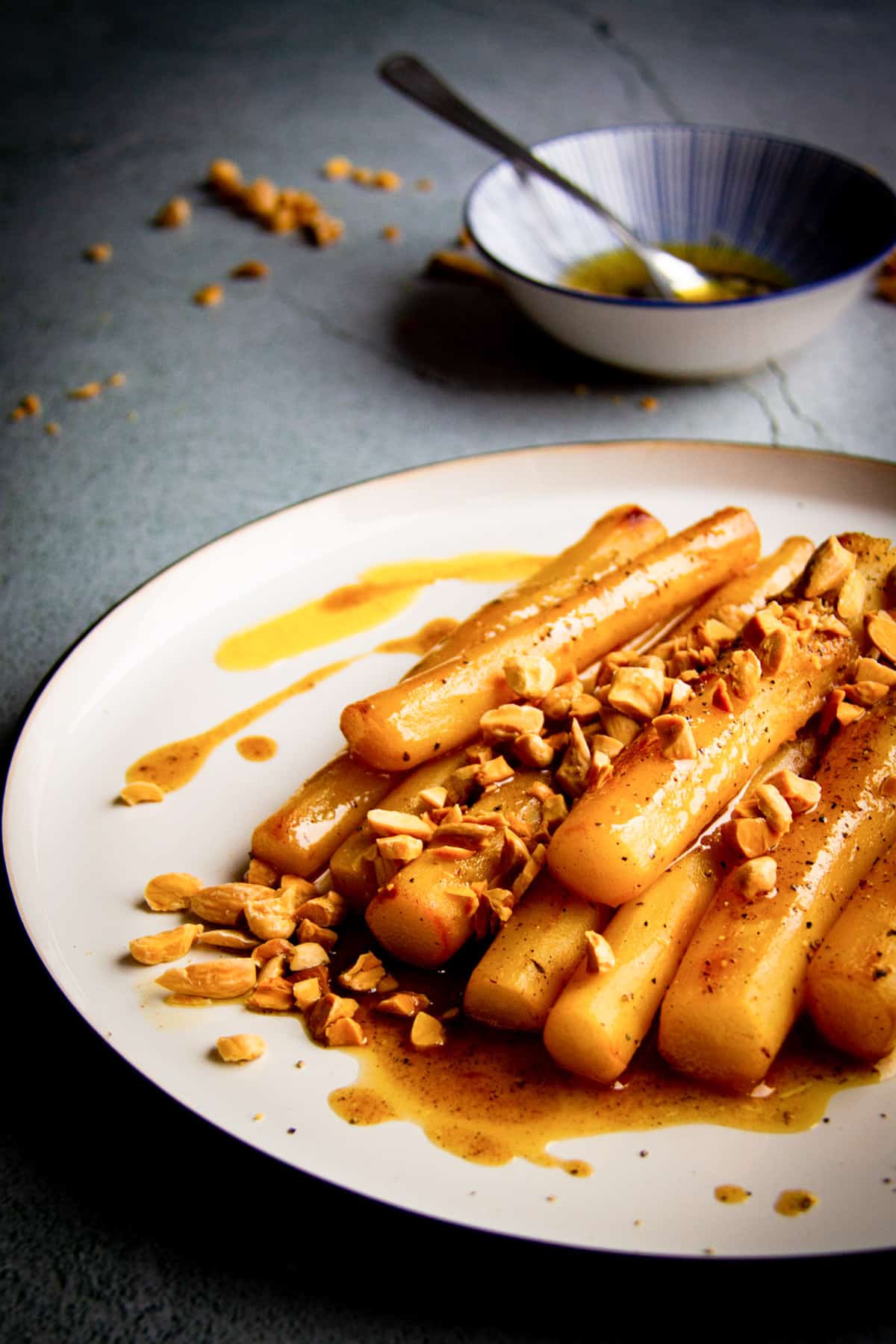
Black Salsify or White Salsify?
For this recipe, I’m using black salsify but there are two popular varieties: black salsify and white salsify.
Both varieties are delicious but the black variety should be peeled because its skin is quite tough and sticky.
The white variety has skin similar to a carrot which can be scrubbed clean and enjoyed without peeling.
How Does Black Salsify Taste?
It has a delicate but delicious sweet flavour with a firm texture.
Some chefs compare it to the slightly sweet taste of oysters or even artichokes.
Personally, I find the taste similar to a celery root although Caroline says it tastes more like a parsnip.
Either way, we can certainly agree it’s tasty!
Why is Salsify So Expensive?
Salsify can take 1-2 years to grow and because of its long, fragile stalks, it can be hard to harvest.
This makes it a little more expensive than similar root vegetables but the flavour is certainly worth the price.

Salsify Was Trending in Victorian Times
It’s hard to believe that specific vegetables were trendy more than 100 years ago but black salsify was a favourite in Mrs. Beeton’s Book of Household Management, published in 1861.
She writes: “Scrape and wash the salsify, cut them into small even sized pieces, throw them into boiling water, and add a little butter, lemon juice, and salt. Boil gently until tender, and then drain well.”
Salsify Health Benefits
Salsify is also very healthy and contains just as much potassium as a banana.
It’s rich in fibre and protein as well as minerals such as potassium, calcium, phosphorus, iron, sodium, and vitamins A, B1, E and C.
Do I Have to Cook Salsify?
No, white and black salsify can also be eaten raw.
It’s possible to make a nice salad when peeled and shaved thin with a speed peeler.
One thing to note is that salsify oxidizes really quickly meaning it will turn brown. If you plan to eat it raw, cut it as close to serving as possible and keep it in acidulated water (water with the juice of a few lemons will work) until serving.
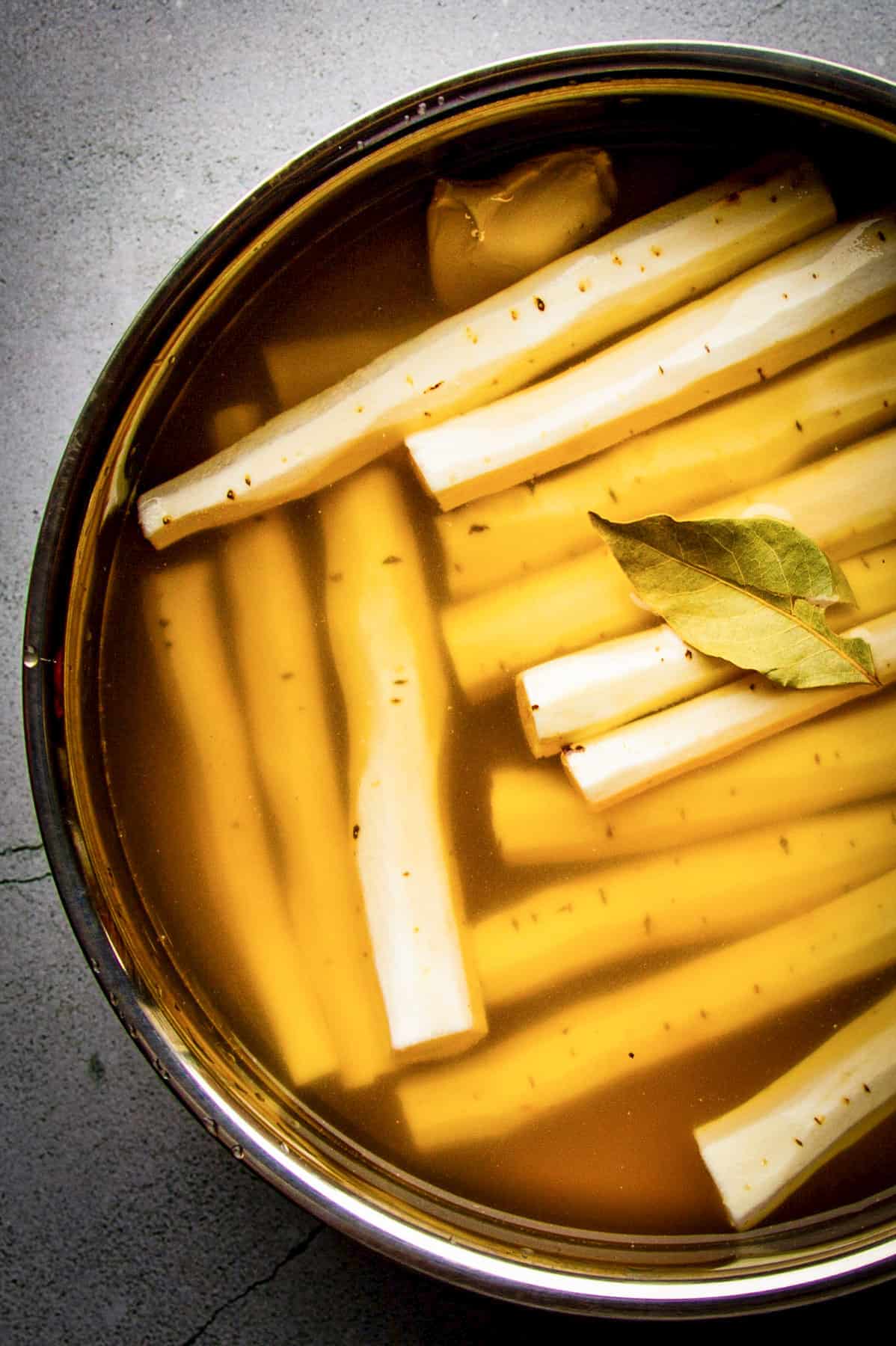
How to Prepare Black Salsify
Here are a few important points to remember when preparing black salsify:
- Wear gloves when peeling this dirty vegetable because the skin is super sticky and it will be hard to wash off your hands.
- Keep the salsify in acidulated water (water with lemon) to ensure the stalks don’t turn brown immediately after peeling.
- Give it a good wash before you try to peel it so you don’t get dirt everywhere.
What Goes With Salsify?
Braised black salsify is a great winter dish that pairs well with roasted poultry such as chicken, pheasant or even duck.
Because of its subtle flavours, salsify is quite versatile and will also work well with other dishes such as braised beef cheek or roasted cod.
Here are some more ideas of what to serve with braised black salsify:
- This Roast Chicken Dinner with Mushroom Gravy
- This Creamy White Asparagus Soup with Hazelnut and Brown Butter
- This Stuffed Chicken Leg with Bacon, Dates and Porcini Mushrooms
- This Sauteed Rainbow Chard with Raisins, Brown Butter and Chili
- These Roasted Rainbow Carrots with Sunflower Dressing
Definitely. For a vegetarian diet, you can easily swap out the chicken stock for light vegetable stock or even just use water.
Yes but swap the chicken stock for a light vegetable broth, the butter for vegan butter and the honey for agave syrup.
Salsify is best stored in its cooled braising liquid. This keeps it juicy and stops it from drying out.
Black Salsify with Toasted Almonds, Honey and Black Pepper
Ingredients
- 8 pc black salsify Look for firm stalks
For Braising the Salsify
- 600 ml chicken stock Or vegetable stock or just water
- 2 tbsp honey
- ⅛ tsp salt
- 1 tbsp butter
- 1 pc bay leaf
- 1 pc lemon cut in half
For Finishing
- 100 ml dry white wine
- 2 tbsp almonds skinless and blanched
- 2 tbsp butter cold
- black pepper freshly cracked
Instructions
- Wash off as much dirt as possible from the salsify.
- Fill a bowl or casserole dish large enough to fit the salsify in with cold water. Cut one lemon in half and add the juice to this water to make acidulated water.Using gloves, peel the salsify. Trim off the ends and cut in half. Keep the stalks submerged in the lemon water.

- Add all of the ingredients "for braising the salsify" in a large pot with the peeled salsify. Bring to a boil and reduce to a simmer. Cook until the stalks are soft but with a slight resistance when poked with a knife – just like cooking carrots. Approx. 10 minutes.

- Let the stalks cool in the liquid for at least 10 minutes.
- Remove the stalks from the braising liquid and dry on a paper towel. Save the braising liquid for later.

- Toast the almonds in the oven at 160°C/375°F for about 5 minutes or until golden brown. Roughly chop and set aside for later.
- Heat a pan with 1 tbsp of butter of medium heat and wait until it foams. Add the salsify and brown them in the butter. Remove the salsify from the pan and save the extra browned butter on the side for later in a small bowl.

- Deglaze the pan with the white wine and reduce it by half. Add 100 ml of the braising liquid and continue cooking until it starts to look saucy. About 2-3 minutes.
- Add the salsify back to the pan and finish the sauce with a knob of cold butter and swirl in the pan off the heat. Season with salt to taste, a squeeze of fresh lemon juice and garnish with black pepper and the toasted almonds. Drizzle a little of the reserved brown butter on top (optional). Enjoy!



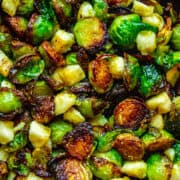

The BEST Bitterballen Recipe (Dutch Deep-Fried Meatballs)
Looking to buy a knife set? Read my guide on Why I’ll Never Buy a Cutco Knife Set.


